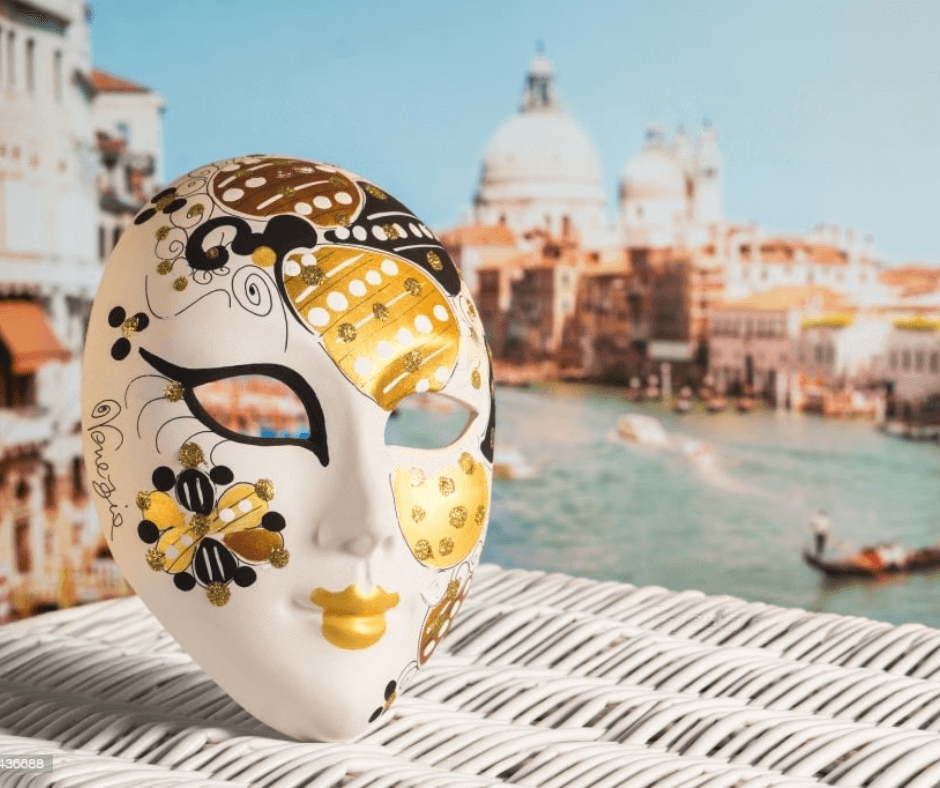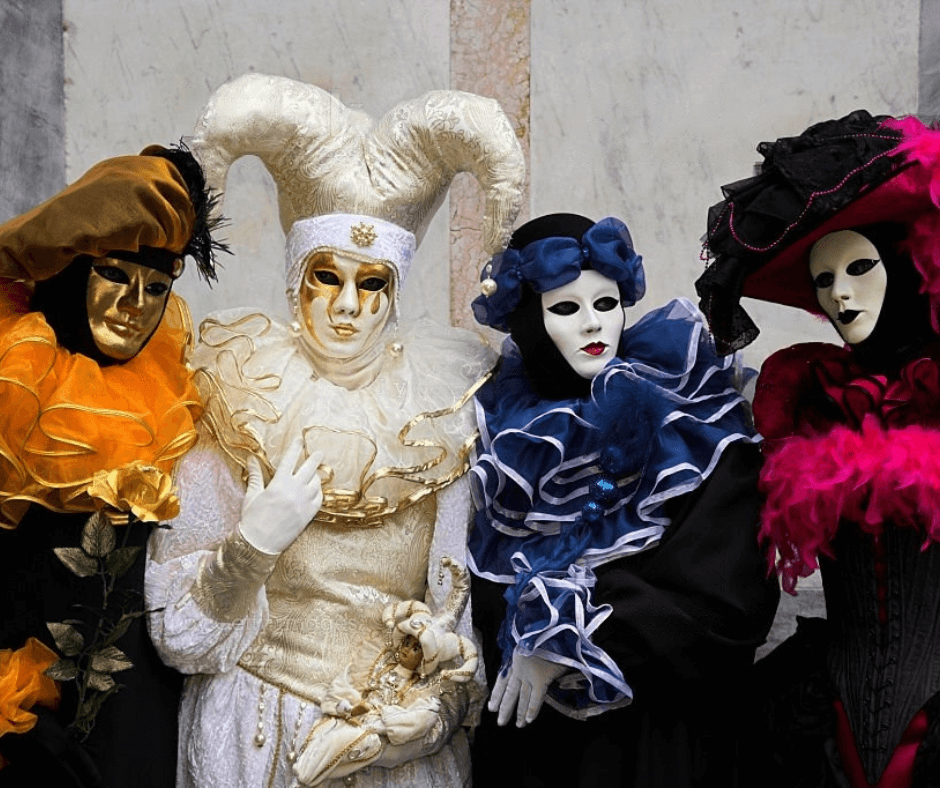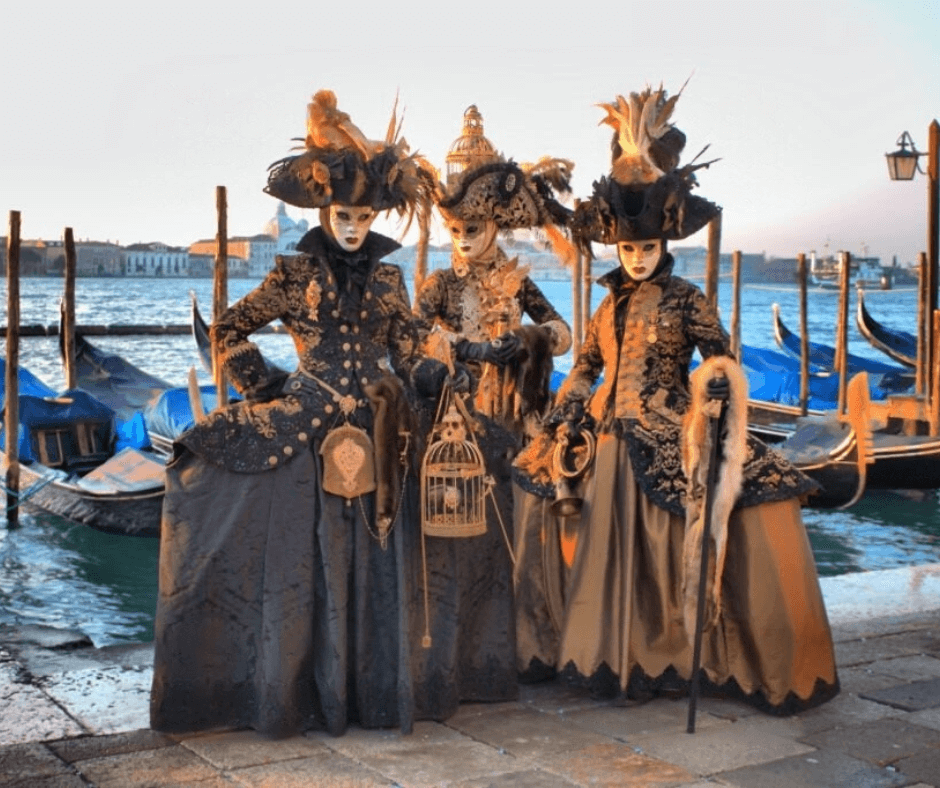The Carnival of Venice (Carnevale di Venezia) is the largest and most important Venetian festival. A mix of tradition, history, and entertainment in a unique city. This festival attracts thousands of people from all around the world.
In this article, we will explore this unmissable event.
History of the Venice Carnival
The start of the Carnival in Venice dates back to 1296, although the festivity wasn’t made official until two centuries later.
Venice was a Republic at that time, and a city member established a feast to celebrate the transition from winter to spring. During the reign of Napoleon, the Carnival stopped. In fact, the fall of the Republic at the hands of Napoleon marked the end of the long independence of Venice and the abolition of the many traditions of the Venetian Carnival for about two centuries.
After a break of almost two centuries, the Carnival tradition restarted.
Well known and renowned throughout Europe, the Venice Carnival in the 18th century became a real institution. Visited each year by thousands of visitors, the prestigious festival of Carnival in Venice at that time reached its international recognition. Due to its effervescent and transgressive atmosphere, the comedy, masks, spectacular shows and the public gambling house made Venice ‘The magnet of Europe’.
In 1979 a programme to engage the inhabitants of Venice with parades of masks and costumes was drafted for the first time. This marked the return of the Carnival of Venice to its origins. Since then, the Carnival has taken place every year. And with success! The new formula has become a success story that has been going on for thirty years.

The tradition of Venetian Masks
A big portion of the experience of being at the Venetian Carnival is the visual delight of seeing all the masked people standing at different iconic spots.
Masks are the true spirit of the modern Venetian Carnival.
In the past, wearing a mask during the Carnival of Venice was a symbol of liberty and equality. Behind the mask, everyone could be anyone – a man or a woman, a pauper or a prince – and everyone commanded equal respect.
Among the most famous and diffused costumes, the so-called baùta consisted of a particular white mask under a black hat and a black cloak. Women, instead, frequently wore a costume called moretta, consisting of a dark velvet mask that was held in place by a button in the mouth.

The modern Carnival of Venice upholds the custom of wearing a mask. Nowadays, Venetian masks are predominantly a symbol of beauty and mystery.
Visitors usually buy a mask as soon as they get in the city, to fully feel part of the festival. You can easily find masks in any of the small stands or shops that have colonized each corner of the streets. However, in the city centre, artisan shops and ateliers still produce handmade and sumptuously decorated masks according to the ancient art.

Carnival of Venice, 2023
The Venice Carnival 2023 will be held from Saturday, February 4 to Tuesday, February 21 2023.
In addition to the official events, various private parties and masked balls are organized in the beautiful Venetian palaces. In these venues it is possible to relive the ancient splendours of the Venetian Carnival of the past.
The highlights of the Carnival of Venice 2023 will be:
- Venetian Feast on Water, the grand opening of the Venice Carnival 2023, on the Cannaregio Canal;
- Festa delle Marie, in Piazza San Marco;
- Flight of the Angel (Volo dell’Angelo), in Piazza San Marco;
- Flight of the Eagle (Volo dell’Aquila), in Piazza San Marco;
- Best Mask Contest, the Grand Final, in Piazza San Marco.

